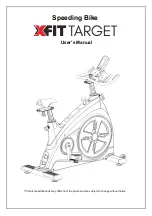
Quick Instruction, Version 1.0
Page 12 of 43 pages
Weatherdock AG Sigmundstraße 180 90431 Nürnberg
Tel.:+49 911 376638-30 www.weatherdock.de
This unit receives all AIS messages on either AIS frequencies or proprie-
tary frequencies, which can be configured.
Think about
The comparison is done only for dynamic data transmission, because
these datasets contain the relevant information to calculate a future
collision point in time and distance, as well as allow the threatened ships
to communicate (MMSI number is stringent part of dynamic data infor-
mation) by VHF. Additionally, 2 more facts concerning class B operation
need to be mentioned:
Unlike the class A service, which is using the SOTDMA method (self or-
ganized time division multiple access) with predefined timeslots (the
ship listens to the traffic and the information containing in all other
telegrams and defines its own raster of transmission timing, which is
then distributed to all other participants within the radio range) the
class B service is using a “listen-before-talk-method”. This means, that
before transmitting, a ship has to observe the radio channel, whether to
be allowed to transmit, if the channel is not occupied, or whether to
wait for a free time slot.
To avoid disturbance of the professional class A service in crowded are-
as, higher-ranking authorities can switch off all class B transponder ac-
tivities, which will probably never happen, but it should be mentioned
.
Above given information is not complete and should give only an over-
view about the AIS topic. For more details please have a look to the
following links:
http://www.navcen.uscg.gov/enav/ais/default.htm
2.
SCOPE OF DELIVERY
In the carton there is contained:













































